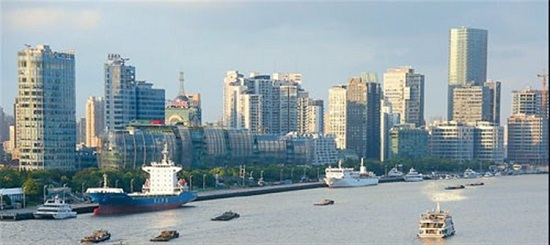| « Pursuit of innovative tech shifts to China | Property investors still keen for Shanghai » |
Grade-A office and retail rents are rising

The new supply of Grade-A office space in Shanghai decreased 67.8 percent year on year in the first quarter of this year.
While Grade-A office rents in Shanghai increased 2.3 percent quarter on quarter, retail rents rose 0.7 percent to 55.7 yuan ($8.59) per square meter per day in the first quarter of this year, according to a latest report by independent global property consultancy Knight Frank.
In the first quarter, only about 100,000 square meters of new Grade-A offices were launched in Shanghai.
The new supply of Grade-A office space decreased 67.8 percent in the first quarter year on year. Only two office buildings were completed, including UOB Building in the "Little Lujiazui" area, providing 30,000sqm of office space, and Technology Innovation Tower Phase II in Caohejing, which added approximately 70,000sqm of offices to the market. Several office buildings are scheduled to be completed in secondary and emerging business districts in the second quarter, providing approximately 400,000sqm of new supply.
During January-March period, Grade-A office rents rose 2.3 percent quarter on quarter to 9.6 yuan per sqm per day.
With the increasing asking rents and vigorous demand from local financial institutions and consultancy industries, the market saw upward movements in rental values. By the end of 2015, there were about 1,000 domestic financial institutions based in Shanghai, accounting for 70 percent of financial firms in the city. The Little Lujiazui area is preferred by these financial institutions, which became major tenants in the area. Law firms and consultancy enterprises preferred office buildings along Nanjing Road W. and Huaihai Road M.
The average Grade-A office vacancy rate dropped 0.6 percentage point quarter on quarter to 4.2 percent in the first three months. The vacancy rate remained low due to vigorous rental demand in the emerging business districts. In the first quarter, net absorptions in emerging business districts doubled to 150,000sqm compared with the previous quarter.
Relocation activities among multinational corporations are expected to drive up the vacancy rate in core CBD areas in the short term.
The Grade-A office market in core CBDs is expected to face challenges brought about by the increasing vacant space left by relocated companies. Vacant offices in good locations with lower rents were absorbed more easily. For example, a law firm rented two floors in The Centre in the first quarter previously occupied by WPP. Premium Grade-A office vacancies with high rents in core CBD waited longer to be absorbed amid an uncertain economic climate. Architecture consultant AECOM was scheduled to relocate from Wheelock Square on Nanjing Road W. to Hopson International Center in Wujiaochang in the second quarter, due to global economic uncertainties and the slowed local real estate industry. Merck Sharp and Dohme China also relocated from Park Place to Caohejing Business Park.
Co-working pattern continued to emerge, with WeWork from the US entering Shanghai.
With the increasing support to small and start-up businesses from the local government, co-working patterns from abroad have become increasingly popular in China, with its low rents and flexible lease terms attracting start-up companies. A buoyant local co-working market has attracted many mature international brands to enter the Chinese market. WeWork, the first co-working operator in the US, made its debut in China in Jing'an District, renting two floors covering 3,000sqm in WE Creative Park. In the coming years, WeWork plans to set up two more offices in Shanghai to meet the increasing leasing demand from start-ups. Meanwhile, 36Kr, another well-known local co-working operator, also rented 1,000sqm of office space in Yangpu District.
Rental growth in core CBD is set to slow down in the second half of this year.
The Shanghai office market will see more than 2 million sqm of new supply in 2016. Rentals are expected to face pressure due to huge supply. Moreover, many MNCs are scheduled to relocate away from core CBD this year, which will drive up the vacancy rates in core CBD.